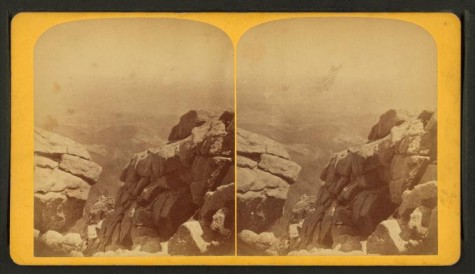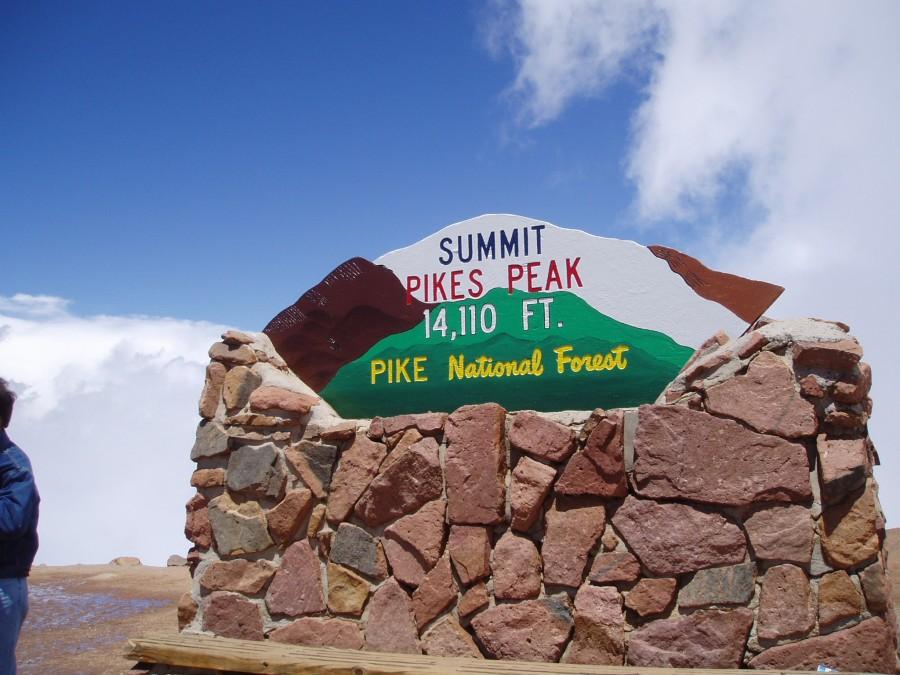The Mighty Peak
Colorado Springs natives are shocked by how little they know about their natural monument: Pikes Peak. It seems like the only time natives acknowledge Pikes Peak is when it has fresh snow on top or when a nonresident comes to town. A trip up Pikes Peak is almost mandatory the first time you’re visiting Colorado Springs, but little is actually remembered about that visit except for the donuts. So for when your relatives are in town here are some things to tell them.
The common knowledge of Pikes Peak history is that it was named after some guy named Pike and that Katharine Lee Bates wrote the lyrics to “America the Beautiful” after sumitting Pikes Peak in 1893. Well, the these two facts are true. Pikes Peak is named for Zebulon Montgomery Pike who saw the mountain when he was a lieutenant in 1806. When he tried to climb the mountain, however, snow got in his way and he never reached the top. In 1893, Katharine Lee Bates was in Colorado Springs to teach a summer session at Colorado College. She took a carriage trip up to Pikes Peak and from there she wrote a poem whose stanzas inspired the America the Beautiful song.
When Pike tried to climb the peak he ambitiously claimed that it might never be climbed. However, it was first climbed in 1820 by Edwin James, a botanist, just 38 years later, the first woman climbed the peak as Julia Holmes did in 1858 after a trail was established to the top.

Like in Cripple Creek and in the mines in Colorado, mules were the most common transportation up the peak. In 1889, a carriage road was opened to the Peak. The horses would bring the passenger about halfway up and then burros (the colloquial word for mules) finished the journey to the top; this was because mules were noted for their hardiness at altitude.
It was one Mr. Zalman Simmons who financed the idea for a mountain railroad going to the top of Pikes Peak. Simmons went up Pikes Peak to check new insulators on the telegraph wires which were in use up to the signal station at the summit. Exhausted after his trip, he was relaxing in a mineral springs when someone mentioned to him the idea. Simmons was so taken with the idea that he organized the company to build the Manitou camp: Pikes Peak Cog Railway.
In 1915, Spencer Penrose bought the carriage road, which had been in disuse since the Cog Railway opened. Penrose improved the road and enlarged it enough so cars could drive it. While promoting his highway, Penrose started the second oldest car race in America, the “Pikes Peak Hill Climb.”
Along with the roads and railroads of Pikes Peak, Barr Trail and the Incline were created. From 1914 to 1917, Fred Barr created the trail because he believed the best way to see Pikes Peak is on the back of a burro. The trail, however, did not go all the way down to Manitou Springs. It started at the bottom of the Incline and was later elongated. They even had Barr camp (they didn’t call it that) where travelers would spend the nights at cabins.
The Incline on the other hand was built in 1907 to support the construction of a hydroelectric plant and its waterline. After construction was done, it was bought by Dr. Brumbach, who turned it into a tourist attraction. It was a 16 minute ride of “scenic splendors.” It continued on like this until 1990 when it closed after a rock slide damaged the tracks and the Cog Railway (who has since owned the Incline) decided to close it. Since then it has turned into the Incline that we know and love today.
Many of the pictures that Colorado Springs has from that time period were taken by a man named William Edward Hook. Hook was born in 1833 in England and moved to the US in 1867 and arrived in Manitou Springs in 1885. For twenty years, Hook photographed the Pikes Peak region and its inhabitance showing the pictures off in his studio on Manitou Avenue. He died in 1908 and was buried in Evergreen Cemetery, Colorado Springs.
So the next time family comes over and looks at the mighty peak, you can pull out of your brain some chill facts about Pikes Peak!

Bonjourno! Me llamo Sophie. I am a tri(sort of) lingual senior with a large passion for sarcasm and baked goods. I still am in band, writers guild, link...














Brady Becco • Dec 1, 2015 at 9:56 pm
This article strengthened my love for Pikes Peak. Great Article!